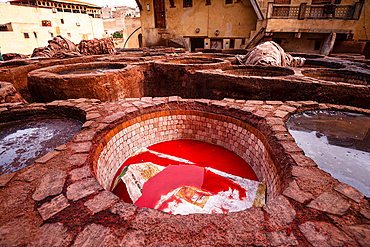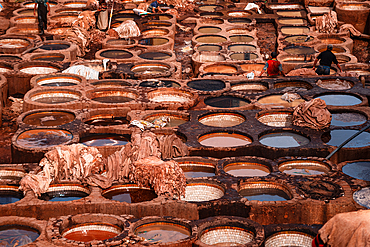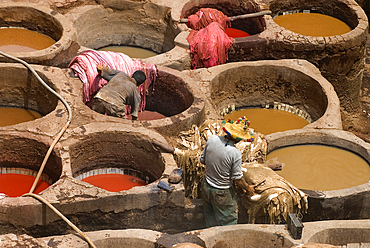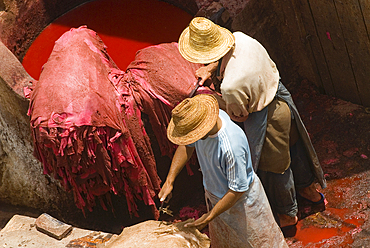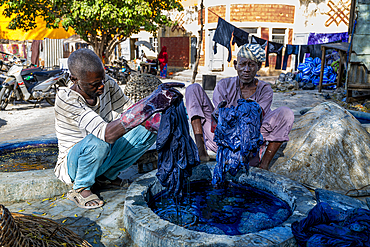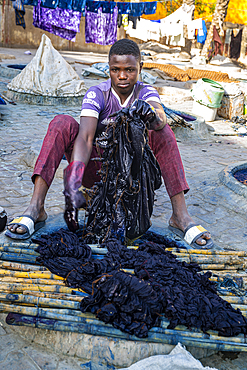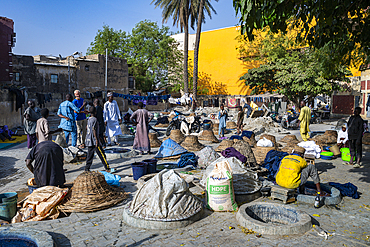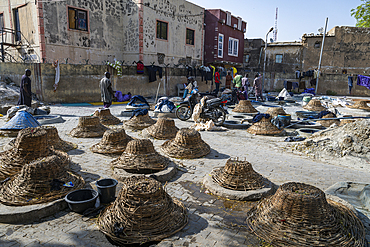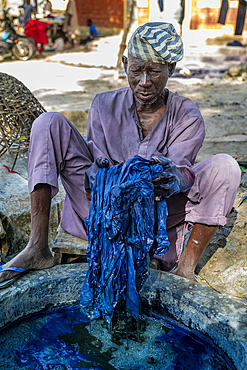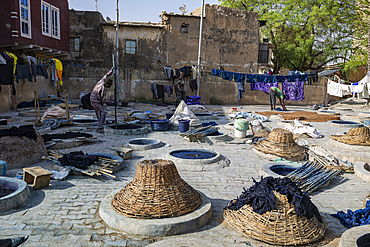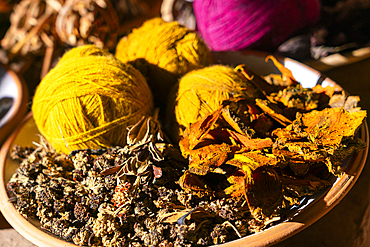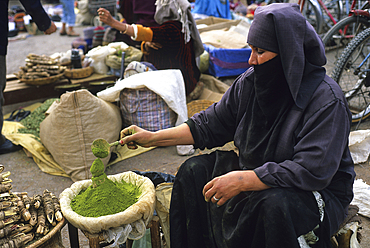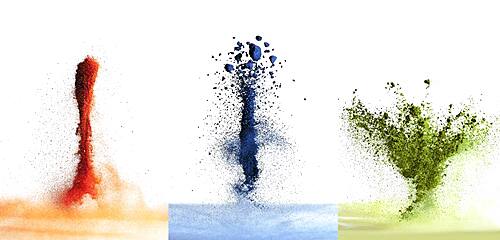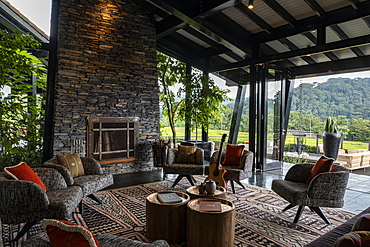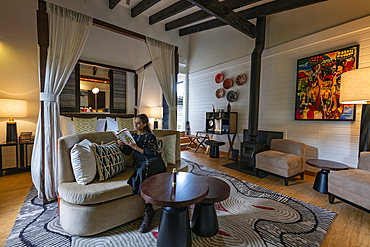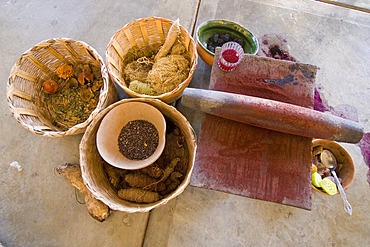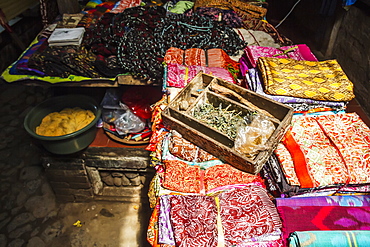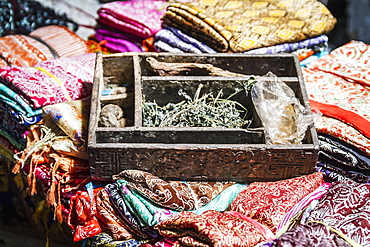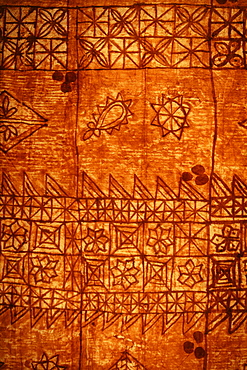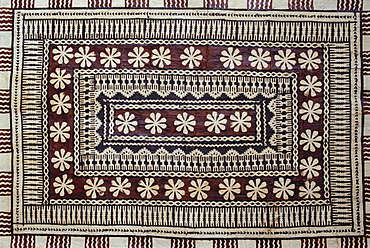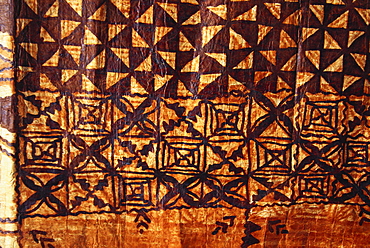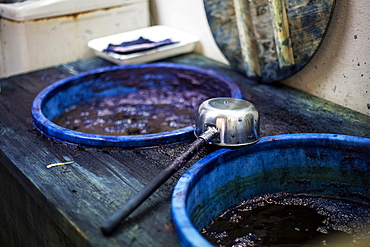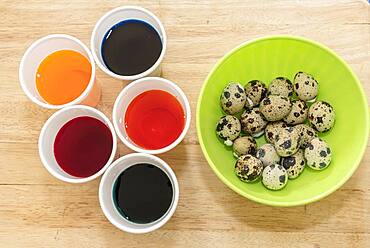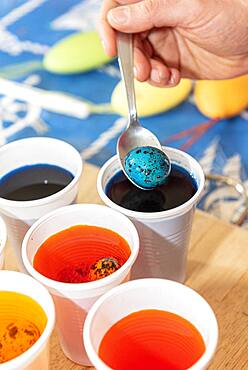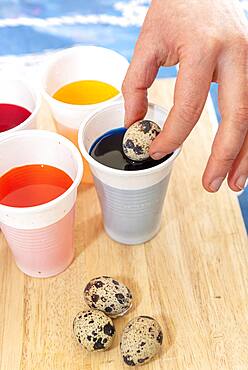Results
25 results found
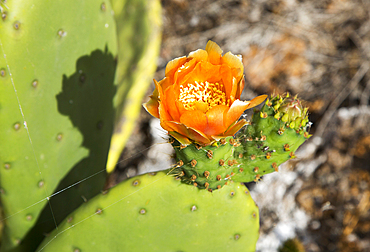
Flower of opuntia ficus-indica (prickly pear) cactus crop for cochineal production, Mala, Lanzarote, Canary Islands, Spain, Atlantic, Europe

Cloth coated with wax-resist dyeing, Oey Soe Tjoen Batik factory, Pekalongan, Java island, Indonesia, Southeast Asia, Asia
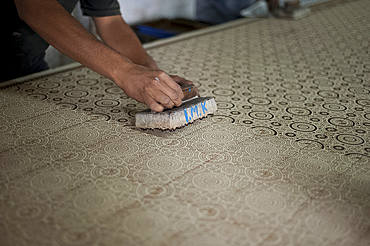
Hand block printing, second process, visually registered, using natural dyes on cotton, Bhuj district, Gujarat, India, Asia

Muslim man showing hand block printed fabric using natural dye made from plants and roots, Bhuj district, Gujarat, India, Asia
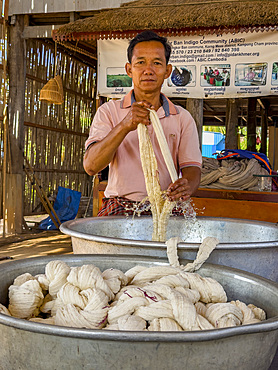
A man cleaning wool for dyeing in the small village of Angkor Ban, Battambang Province, Cambodia, Indochina, Southeast Asia, Asia
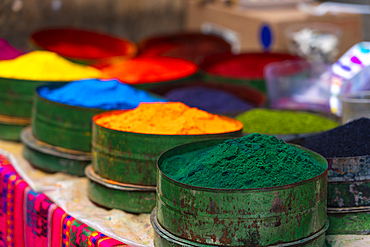
Close-up of colorful powdered pigments used as natural textile dye, Pisac market, Pisac, Sacred Valley, Urubamba Province, Cusco (Cuzco) Region, Peru, South America
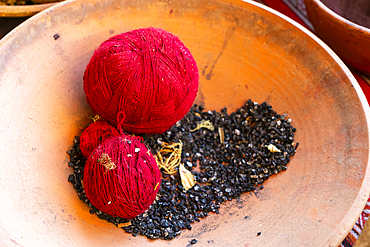
Red balls of wool and cactus insects as natural dye, Chinchero, Sacred Valley, Urubamba Province, Cusco (Cuzco) Region, Peru, South America
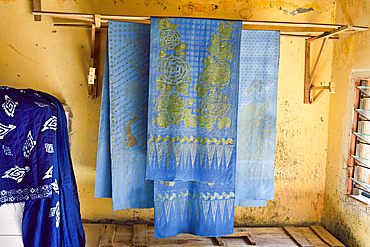
Zahir Widadi's home and workshop, specialist in batik indigo dyes, Pekalongan, Java island, Indonesia, Southeast Asia, Asia
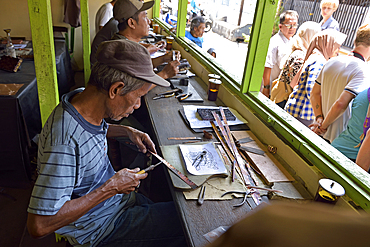
Workshop of copper plate stamps (cap) used to apply wax-resist to make pattern before dyeing in batik process, Sondakan district, Solo (Surakarta), Java island, Indonesia, Southeast Asia, Asia
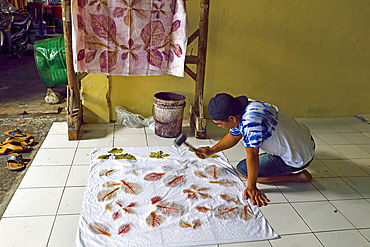
Lurik House workshop using eco-printing technique, using sap from teak leaves as natural dyes, and at the same time creating the motif, Dien by Dinar, contemporary batik, Sondakan district, Solo (Surakarta), Java island, Indonesia, Southeast Asia, Asia
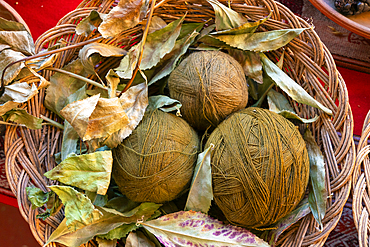
Brown balls of wool and dried leaves as natural dye, Chinchero, Sacred Valley, Urubamba Province, Cusco (Cuzco) Region, Peru, South America
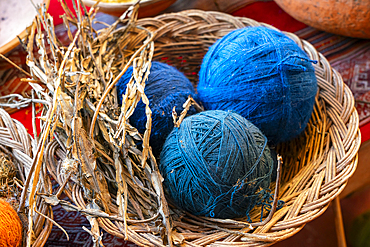
Blue balls of wool and dried plant as natural dye, Chinchero, Sacred Valley, Urubamba Province, Cusco (Cuzco) Region, Peru, South America
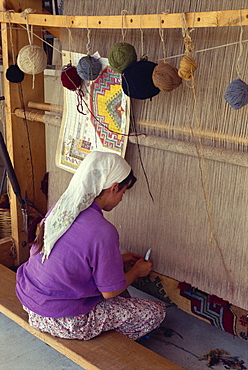
Woman weaving in a village carpet cooperative, using natural organic and vegetable dyes, at Mumcular, Anatolia, Turkey, Asia Minor, Eurasia

Mexican aztec dress gods at Grand Palladium White Sand Resort and Spa in Riviera Maya, Yucatan Peninsula, Quintana Roo, Caribbean Coast, Mexico.
Aztec clothing was generally loose fitting and did not completely cover the body. When the Spanish arrived in Mexico, the people were surprised to see them in their full armour, with only their faces exposed.
Aztec clothes were generally made of cotton (which was imported) or ayate fiber, made from the Maguey Cactus (also called the Century Plant or American Aloe). Women would weave the fibers into clothing, a task girls were taught as young teenagers. Because of their vast trading network, the Aztecs were able to make use of a beautiful array of dyes, creating the brilliant

Mexican aztec dress gods at Grand Palladium White Sand Resort and Spa in Riviera Maya, Yucatan Peninsula, Quintana Roo, Caribbean Coast, Mexico.
Aztec clothing was generally loose fitting and did not completely cover the body. When the Spanish arrived in Mexico, the people were surprised to see them in their full armour, with only their faces exposed.
Aztec clothes were generally made of cotton (which was imported) or ayate fiber, made from the Maguey Cactus (also called the Century Plant or American Aloe). Women would weave the fibers into clothing, a task girls were taught as young teenagers. Because of their vast trading network, the Aztecs were able to make use of a beautiful array of dyes, creating the brilliant
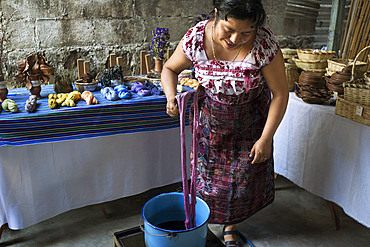
A Mayan woman use natural dyes to color fabrics. Ixoq Ajkeem comunity, San Juan La Laguna, Solol√°, Guatemala. Santiago Atitlan, lake Atitlan, Guatemala.

Stylish interior of the lounge area in the Kivu Paradis Hotel Resort on the banks of Lake Kivu, Nyamyumba, Western Province, Rwanda, Africa

Cactus field for breeding lice for natural dyes in Guatiza, prickly pear (Opuntia ficus-indica), Lanzarote, Canary Islands, Spain, Europe
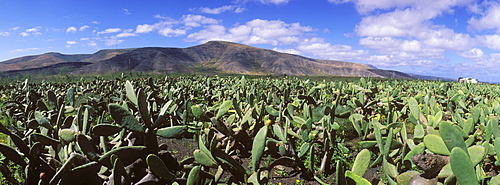
Cactus field for breeding lice for natural dyes in Guatiza, prickly pear (Opuntia ficus-indica), Lanzarote, Canary Islands, Spain, Europe
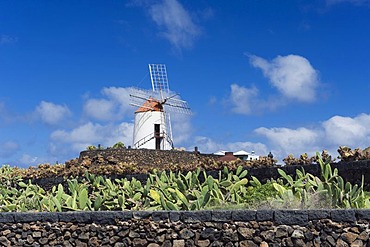
Wind mill, cactus field for breeding lice for natural dyes in Guatiza, prickly pear (Opuntia ficus-indica), Lanzarote, Canary Islands, Spain, Europe
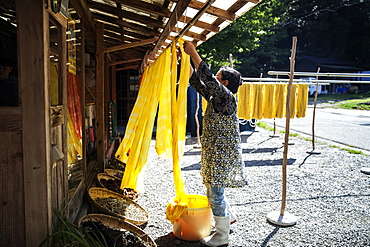
Japanese woman outside a textile plant dye workshop, hanging up freshly dyed bright yellow fabric, Kyushu, Japan
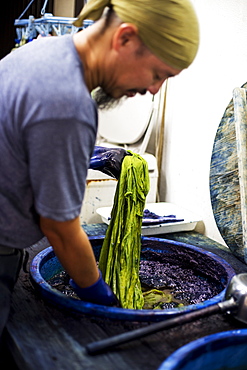
Japanese man wearing bandana standing in a textile plant dye workshop, dyeing piece of green fabric, Kyushu, Japan
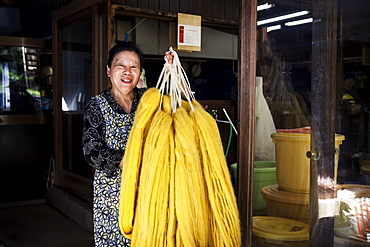
Japanese woman working in a plant dye workshop, holding up freshly dyed bright yellow fabric, Kyushu, Japan
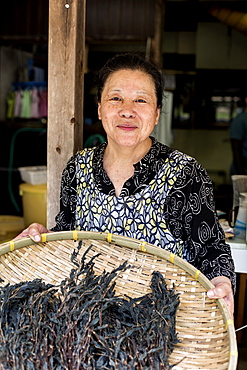
Japanese woman standing in a textile plant dye workshop, holding basket with plant matter, smiling at camera, Kyushu, Japan

Japanese woman standing in a textile plant dye workshop, holding piece of bright yellow fabric, Kyushu, Japan
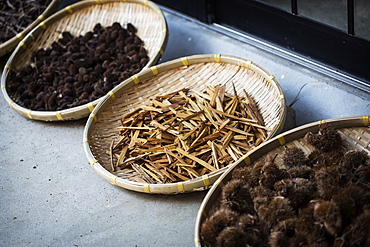
High angle close up of Yashabuji, Haze and Kuri Chestnut in a textile plant dye workshop, Kyushu, Japan
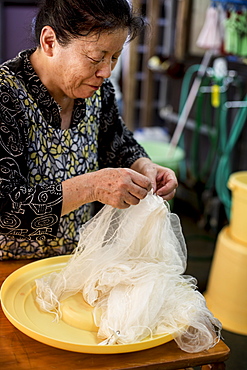
Japanese woman standing in a textile plant dye workshop, holding piece of sheer white fabric, Kyushu, Japan
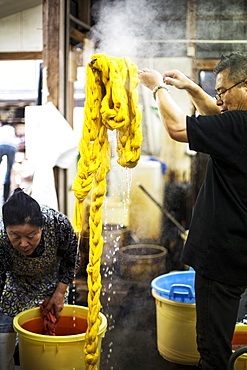
Japanese man standing in a textile plant dye workshop, holding aloft piece of freshly dyed bright yellow fabric, Kyushu, Japan
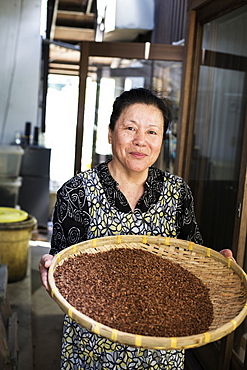
Japanese woman standing in a textile plant dye workshop, holding basket with Akane, Rubia plant powder, smiling at camera, Kyushu, Japan

Japanese woman standing in a textile plant dye workshop, holding piece of bright yellow fabric, Kyushu, Japan

